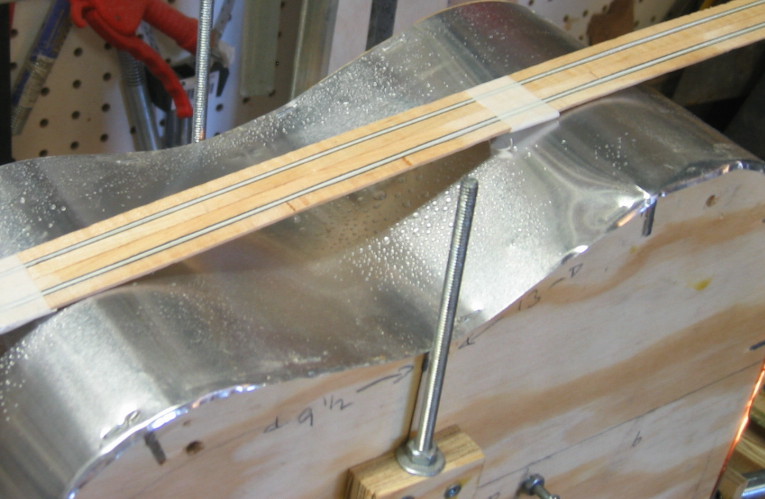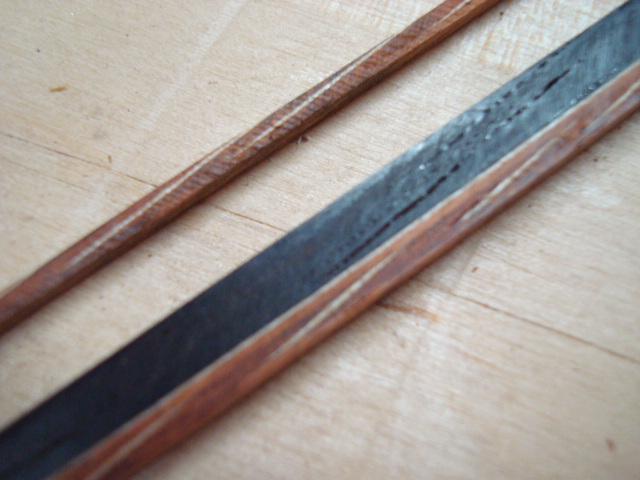Mike,
May I recommend Titebond III (3) to glue the veneer to the face. It will survive the heat of bending; some glues will delaminate.
Also, use Saran Wrap covered, 3/4" MDF on both sides of the sandwich as clamping cauls, to distribute the clamping pressure evenly. Use lots of clamps. Crank it down just a bit tighter than typical clamping pressure.
Once the veneer gets wet with glue, it will want to curl. You can do a quick wipe with a damp cloth on the other (non-glue) face to even it out while you get it clamped. It would not hurt to do the same with the Walnut solid, which may also want to warp a bit. If you use more than one layer of veneer, you'll need to work quickly to make sure the glue doesn't start to dry before you clamp.
Flatsawn wood, sanded to about 3/16" to 7/32" thick is perfect for this. The bindings will then be quartersawn, and besides being predictably easier to bend, IMO the quartered face of most species look better (other than the obvious birdseye, quilted, etc. that shows up on the flatsawn face.) I think curly woods usually visually *pop* more on the quartered face too. You may want to make a couple of sets while you're processing these, and you can do some curly and some plain - to use against plain or figured sides as you feel will look best.
Once dry, joint one edge, the rip (resaw) binding strips about .090" to .095" thick or a bit thicker. Be sure to flip the board so the veneer(s) are faced up when you resaw the strips, so the veneers don't chip out. Sand to .080" thick, and you'll be ready to bind!
Dennis
|


